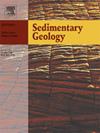A comprehensive analysis of the Cambrian Drumian carbon isotope excursion (DICE): Insights from paleoclimate, paleoenvironment and global correlations
IF 2.9
2区 地球科学
Q1 GEOLOGY
引用次数: 0
Abstract
The Drumian Carbon Isotope Excursion (DICE) has been proposed as a potential marker for the Global Boundary Stratum Section and Point (GSSP) at the base of the Drumian. However, the characteristics of δ13C excursions (i.e., strength, number of subpeaks, and range of the excursion) show significant regional variability, necessitating further verification. Additionally, the paleoenvironmental conditions during the DICE event require deeper investigation to better understand their nature and mechanism. The current study examines carbon-isotope variations across the Qinglongshan section, a representative site within the Miaolingian–Furongian carbonate platform of the Ordos Basin, which spans the DICE event. The δ13C profile of the section documents several key carbon-isotope excursion events: the global Steptoean Positive Isotopic Carbon Excursion (SPICE, ∼2.5 ‰ positive excursion), DICE (∼4.0 ‰ negative excursion 1), and a potential globally negative excursion 2 (NE2, ∼3.5 ‰) which may correlate with the Drumian–Guzhangian boundary. These excursions are linked to major fluctuations in the carbon cycle and significant environmental changes. Sedimentological and geochemical analyses suggest that the DICE event coincided with marine transgression and a shift from warm and arid to more humid climate. The climate transition likely enhanced chemical weathering and increased terrestrial detrital input, leading to reduced salinity and intermittent anoxic conditions. Variations in seawater chemistry driven by sealevel and terrestrial input fluctuations likely contributed to the deposition of alternating red beds and negative excursion of DICE. Minor discrepancies in the stratigraphic position of the global δ13C peak may reflect uncertainties in biostratigraphy or limitations in data resolution. Moreover, terrestrial input is thought to have influenced both the amplitude of the peak negative δ13C values and the overall duration of the DICE event.

寒武纪Drumian碳同位素漂移(DICE)的综合分析:来自古气候、古环境和全球相关性的启示
Drumian碳同位素偏移(DICE)已被提出作为全球边界地层剖面和点(GSSP)的潜在标志。但δ13C漂移的强度、子峰数和范围等特征表现出明显的区域差异,需要进一步验证。此外,DICE事件期间的古环境条件需要深入研究,以更好地了解其性质和机制。目前的研究考察了青龙山剖面的碳同位素变化,青龙山剖面是鄂尔多斯盆地苗岭—芙蓉期碳酸盐岩台地的一个代表性遗址,跨越了DICE事件。剖面的δ13C剖面记录了几个关键的碳同位素偏移事件:全球阶梯正同位素碳偏移(SPICE, ~ 2.5‰正偏移),DICE(~ 4.0‰负偏移1),以及可能与Drumian-Guzhangian边界相关的潜在全球负偏移2 (NE2, ~ 3.5‰)。这些偏差与碳循环的重大波动和重大环境变化有关。沉积学和地球化学分析表明,DICE事件与海侵同时发生,气候从温暖干旱向湿润气候转变。气候转变可能增强了化学风化作用,增加了陆地碎屑输入,导致盐度降低和间歇性缺氧条件。海平面和陆地输入波动驱动的海水化学变化可能导致交替红层沉积和DICE负偏移。全球δ13C峰值地层位置的微小差异可能反映了生物地层学的不确定性或数据分辨率的局限性。此外,陆地输入被认为影响了峰值负δ13C值的振幅和DICE事件的总持续时间。
本文章由计算机程序翻译,如有差异,请以英文原文为准。
求助全文
约1分钟内获得全文
求助全文
来源期刊

Sedimentary Geology
地学-地质学
CiteScore
5.10
自引率
7.10%
发文量
133
审稿时长
32 days
期刊介绍:
Sedimentary Geology is a journal that rapidly publishes high quality, original research and review papers that cover all aspects of sediments and sedimentary rocks at all spatial and temporal scales. Submitted papers must make a significant contribution to the field of study and must place the research in a broad context, so that it is of interest to the diverse, international readership of the journal. Papers that are largely descriptive in nature, of limited scope or local geographical significance, or based on limited data will not be considered for publication.
 求助内容:
求助内容: 应助结果提醒方式:
应助结果提醒方式:


